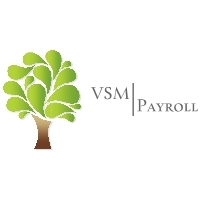What is RTI ?
– What is RTI? – From 6 April 2013 employers had to start reporting PAYE information to HMRC in real time. Referred to as Real Time Information – or RTI. In practice this means that employers have to send details to HMRC every time they pay an employee using payroll software to send the information electronically as part of their routine payroll process
– Why has HMRC introduced RTI? – HMRC introduced RTI in order to modernise the Pay As You Earn (PAYE) system and keep pace with changes to modern working patterns. Nowadays, many people have more than one job, and can change jobs more frequently. This means people sometimes pay the wrong amount of tax. RTI provides HMRC with up to date information, so it should be easier to ensure deductions for tax, National Insurance and student loans are accurate.
– What has changed with RTI? – The way that you calculate PAYE, pay your employees and make payments to HMRC has NOT changed. The main difference is how and when you report your payroll information to HMRC. Instead of sending your information to HMRC once a year (via a ‘P35’ and ‘P14s’) you are required to send RTI returns each time that you pay your employees, be that weekly, monthly or otherwise. Also, you are no longer be required to file starter or leaver forms (‘P45’ and ‘P46’) to HMRC as this information is included as part of your regular RTI submission.
– Can Virtual Staff Member Limited send my RTI returns to HMRC? – Yes – our software has been granted full HMRC PAYE recognition for RTI to submit your RTI returns to HMRC.
– What are the mandatory data items for RTI? – Every RTI submission requires the correct Surname, Forename, Date of Birth and Gender for each of your employees. It is not possible to send an RTI return without each of these items. In addition to this, HMRC ask that you provide the correct National Insurance number when known, as this is used to ‘match’ the data you send to HMRC with that which is held on their database. There is also a new mandatory data item – ‘Hours Worked’.
Operating under RTI
– When do I need to file my RTI returns? – You need to send your RTI submissions to HMRC on or before each pay day.
– What information will I be sending? – There a number of RTI submission types, the main ones being the Full Payment Submission (FPS) and the Employer Payment Summary (EPS).
The Full Payment Submission (FPS) is the ‘main’ submission type, and is sent each time that an employer pays their employees. So if employees are paid monthly we send 12 FPS submissions per year, if employees are paid weekly we send 52 FPS submissions and so on. The FPS contains details of all employees that are being paid in that particular pay period including their tax code, gross pay, tax deducted, NIC, sick pay (SSP), student loans and parenting pay (SMP, OSPP, ASPP etc.) together with their year-to-date figures. Each FPS also contains details of employees that have joined or left during that pay period.
The Employer Payment Summary (EPS) Is used to inform HMRC of any statutory payments recovered in any month (e.g. maternity or paternity pay), or CIS deductions suffered by the company. This is sent on a monthly basis when appropriate. We can determine whether or not an EPS is due, and if so, we send it alongside the relevant FPS submission.
– What happens if one of my employees is irregularly paid? – If your employee is not paid in any one pay period (e.g they may be a casual or seasonal employee, or they may be on long term sick leave) then our software will automatically send an ‘Irregular Employment Pattern Indicator’ within the FPS for that period. This prevents HMRC from assuming that they have left your employment.
– Some of your employees earn below the threshold for tax and National Insurance – do we have to include them on the RTI submission? – Yes. All of your employees, regardless of how much they earn must be entered into our software and included in your RTI returns. This includes students and those workers for whom you may have previously used form P38a.
– What about Starters and Leavers – Starter and leaver information is sent as part of the FPS, so you will no longer be filing P45 or P46 forms when someone joins, nor will you file a P45 to HMRC when somebody leaves. You will still need to issue a leaver with a P45, which we will produce for you.
– What happens if I need to pay someone after they have left? – If you need to make a payment to an employee in a pay period after the one in which they left, then you should use tax code 0T on a week1/month1 basis. The details of this extra payment will be sent in the next FPS.
– Do I still need to give my employees a P60 at the end of the year? – Yes. It is still necessary to issue each employee with a P60 at year-end. Our software is accredited by HMRC for printing P60s onto plain paper and as PDF documents.
– How does RTI affect the Construction Industry Scheme (CIS)? – RTI involves the submission of PAYE information to HMRC and does not affect monthly CIS 300 returns, which will still be submitted monthly to HMRC in the normal way. CIS deductions suffered by a limited company are submitted to HMRC on a monthly EPS.
– Will the way which we report employees Expenses and Benefits change with RTI? – No – you continue to report these items separately using the P11d procedure.
